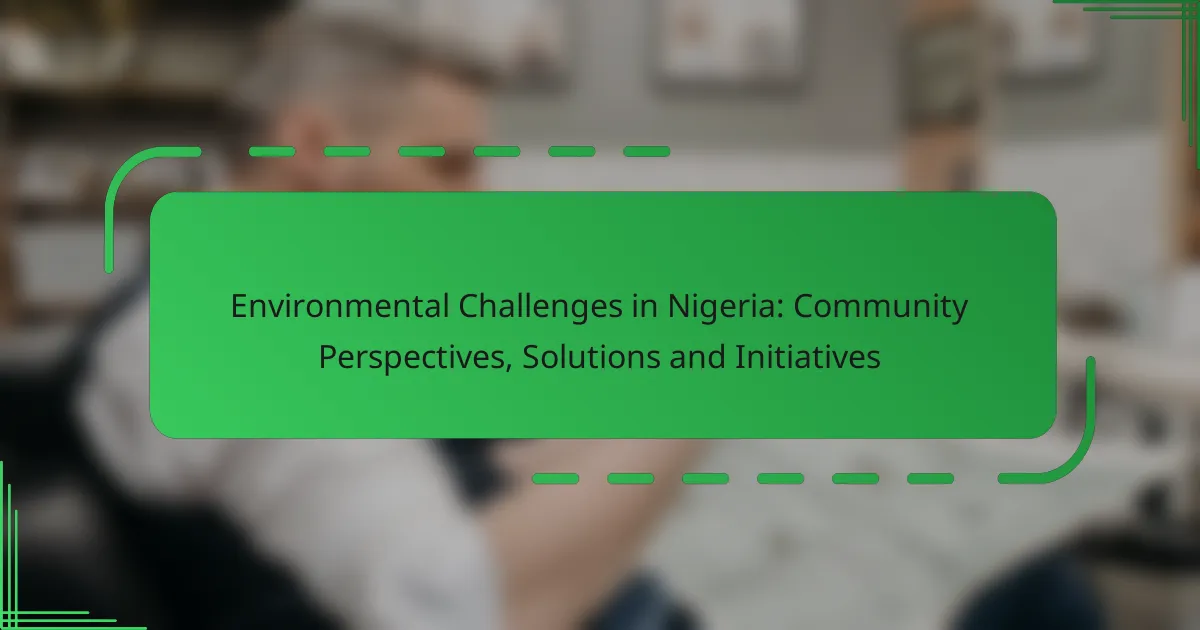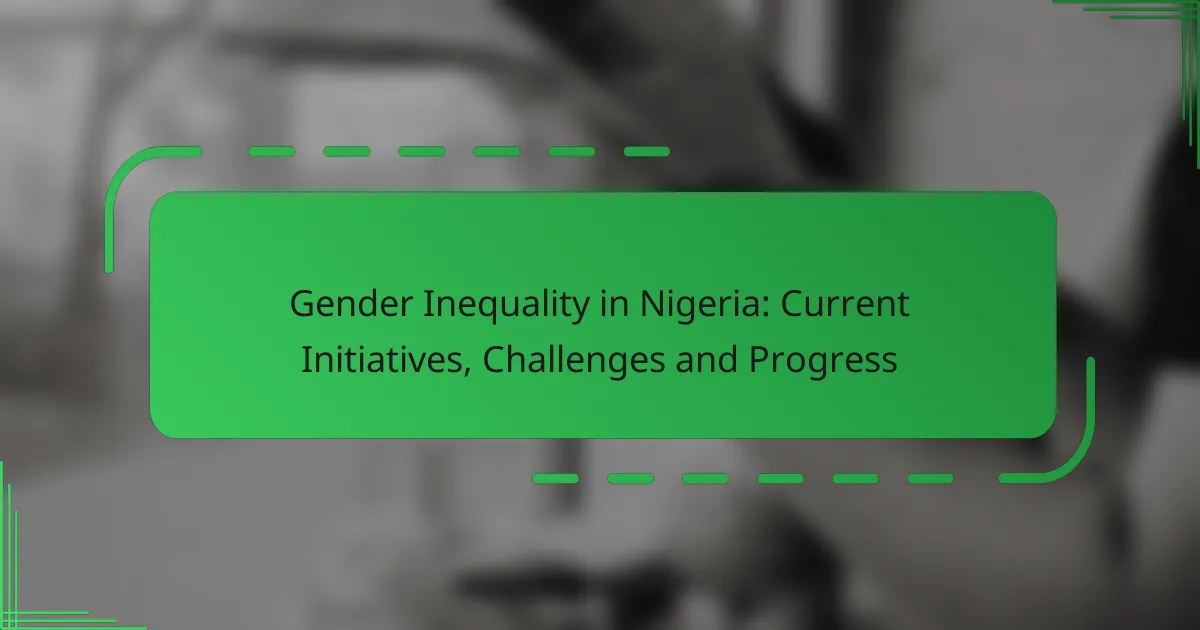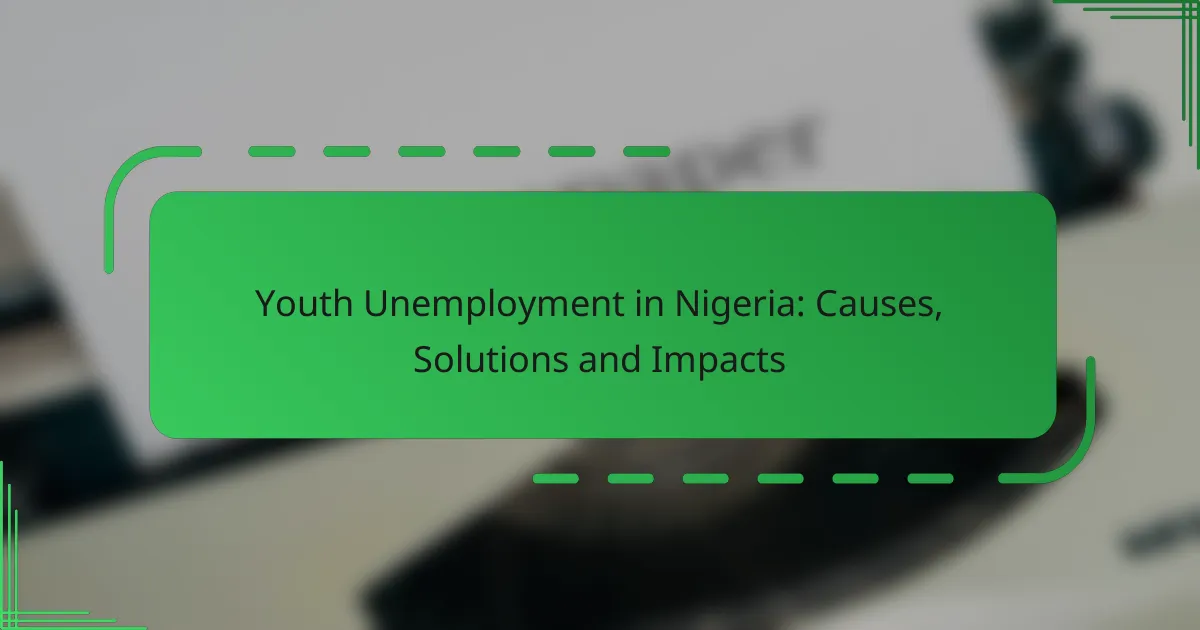Education plays a vital role in reducing poverty by providing individuals with the skills and knowledge needed for better employment and higher income. By ensuring access to quality education, communities can break the cycle of poverty, fostering economic growth and personal development for future generations.
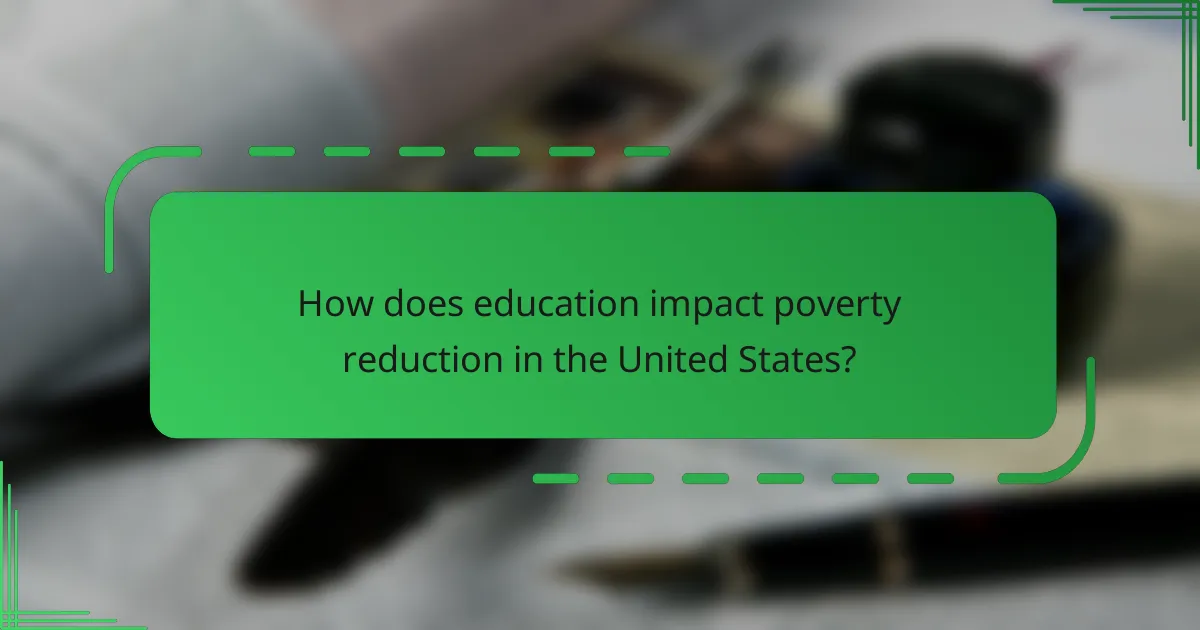
How does education impact poverty reduction in the United States?
Education significantly contributes to poverty reduction in the United States by equipping individuals with the skills and knowledge necessary for better job opportunities and higher income levels. Access to quality education can break the cycle of poverty, enabling families to improve their economic status over time.
Increased earning potential
Higher levels of education typically lead to increased earning potential. Individuals with a college degree can earn substantially more than those with only a high school diploma, often seeing a difference of tens of thousands of dollars annually. This financial advantage allows families to invest in better living conditions and education for their children.
Moreover, education opens doors to higher-paying professions, particularly in fields such as technology, healthcare, and engineering. Pursuing vocational training or higher education can significantly enhance job prospects and salary expectations.
Improved health outcomes
Education is closely linked to improved health outcomes, which can further alleviate poverty. Individuals with higher education levels tend to have better access to healthcare services and are more likely to engage in healthy behaviors. This can lead to lower healthcare costs and a reduced risk of chronic diseases.
Additionally, educated individuals are often more informed about health issues and preventive measures, contributing to a healthier community overall. This not only benefits them personally but also reduces the economic burden on public health systems.
Enhanced social mobility
Education serves as a key driver of social mobility, allowing individuals from low-income backgrounds to rise to higher socioeconomic statuses. By obtaining a quality education, individuals can break free from the constraints of their circumstances and access better job opportunities.
Programs that support educational access, such as scholarships and community colleges, play a crucial role in facilitating this upward mobility. Investing in education can create a more equitable society, where everyone has the chance to succeed regardless of their starting point.
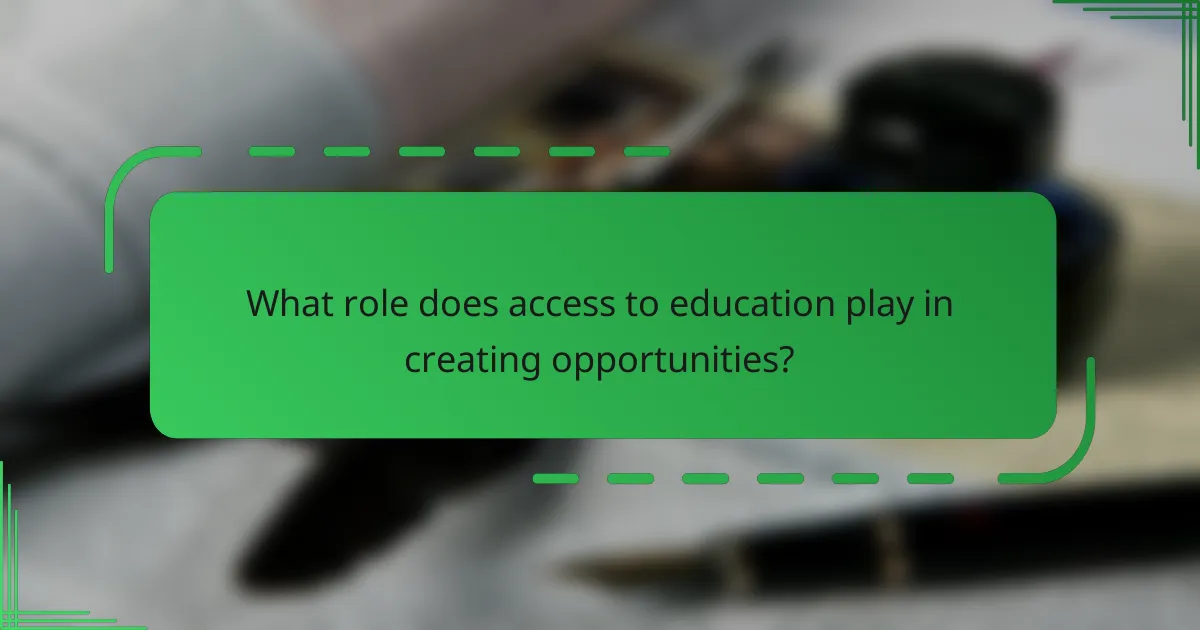
What role does access to education play in creating opportunities?
Access to education is crucial for creating opportunities, as it equips individuals with the skills and knowledge necessary to improve their economic status. By enhancing employability and fostering personal development, education serves as a pathway out of poverty.
Access to vocational training programs
Vocational training programs provide practical skills tailored to specific careers, making them essential for individuals seeking immediate employment. These programs often focus on trades such as plumbing, electrical work, or healthcare, which are in high demand and can lead to stable jobs.
Many vocational training options are available at community colleges or technical schools, and they typically range from a few months to two years in duration. Participants can often find programs that align with local job markets, increasing their chances of securing employment upon completion.
Availability of scholarships and financial aid
Scholarships and financial aid play a significant role in making education accessible, especially for low-income individuals. These resources can cover tuition costs, books, and other expenses, allowing students to focus on their studies without the burden of financial stress.
Various organizations, including government agencies and private foundations, offer scholarships based on merit, need, or specific demographics. Prospective students should actively research and apply for these opportunities to maximize their chances of receiving financial support.

How can education systems be improved to reduce poverty?
Improving education systems can significantly reduce poverty by increasing access to quality learning opportunities and enhancing skill development. Key strategies include implementing universal pre-K programs and enhancing teacher training and support to ensure effective teaching practices.
Implementing universal pre-K programs
Universal pre-K programs provide early childhood education to all children, which can lead to better academic outcomes and social skills. Research indicates that children who attend pre-K are more likely to succeed in school and have higher earning potential later in life.
To effectively implement these programs, governments should focus on funding, accessibility, and curriculum quality. For instance, allocating a portion of the national budget to early childhood education can help ensure that all families, regardless of income, can access these services.
Enhancing teacher training and support
Enhancing teacher training and support is crucial for improving educational quality and outcomes. Well-trained teachers are better equipped to engage students and adapt their teaching methods to meet diverse learning needs.
Investing in ongoing professional development and mentorship programs can help teachers stay updated on best practices. Additionally, providing adequate resources and support systems can reduce burnout and improve job satisfaction, ultimately benefiting students’ learning experiences.
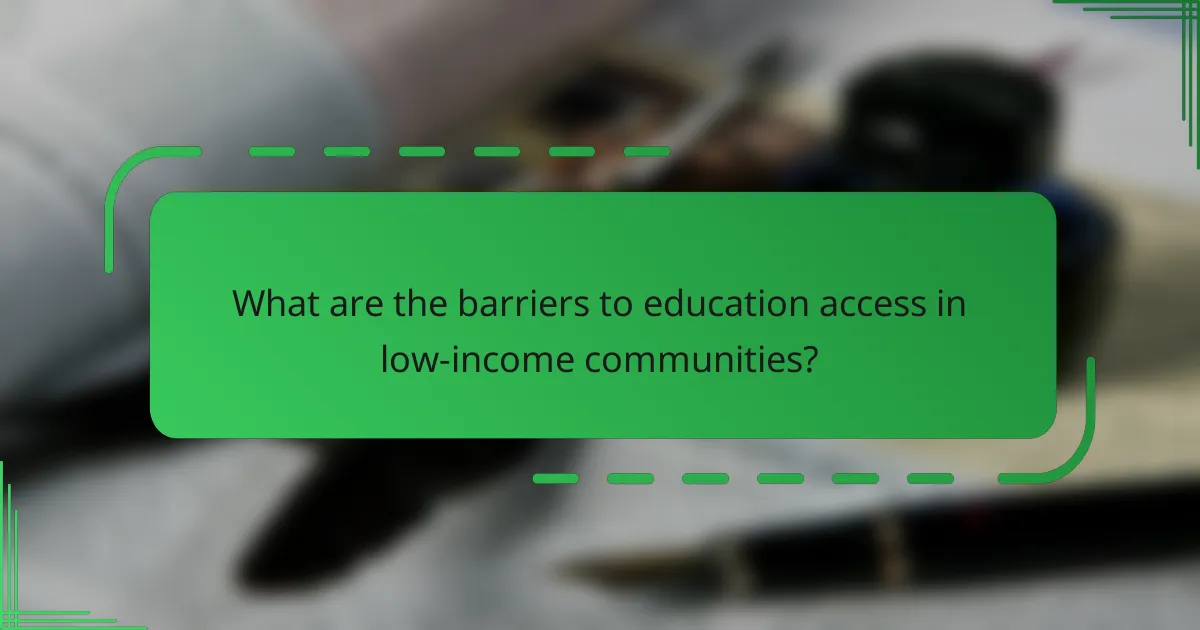
What are the barriers to education access in low-income communities?
Barriers to education access in low-income communities include insufficient funding for schools and transportation challenges that hinder students from reaching educational institutions. These obstacles limit opportunities for children and can perpetuate cycles of poverty.
Lack of funding for schools
Insufficient funding for schools in low-income areas often results in inadequate resources, such as outdated textbooks, insufficient technology, and poorly maintained facilities. Schools may struggle to hire qualified teachers, leading to larger class sizes and diminished educational quality.
Funding disparities can be exacerbated by reliance on local property taxes, which may yield lower revenue in economically disadvantaged neighborhoods. This creates a gap in educational opportunities compared to wealthier areas, where schools typically receive more financial support.
Transportation challenges for students
Transportation challenges significantly impact students’ ability to attend school regularly. In many low-income communities, public transportation options may be limited, unreliable, or non-existent, making it difficult for students to travel to educational facilities.
Additionally, families may lack access to private vehicles, and the cost of transportation can strain already tight budgets. As a result, students may miss classes or drop out altogether, further hindering their educational and economic prospects.
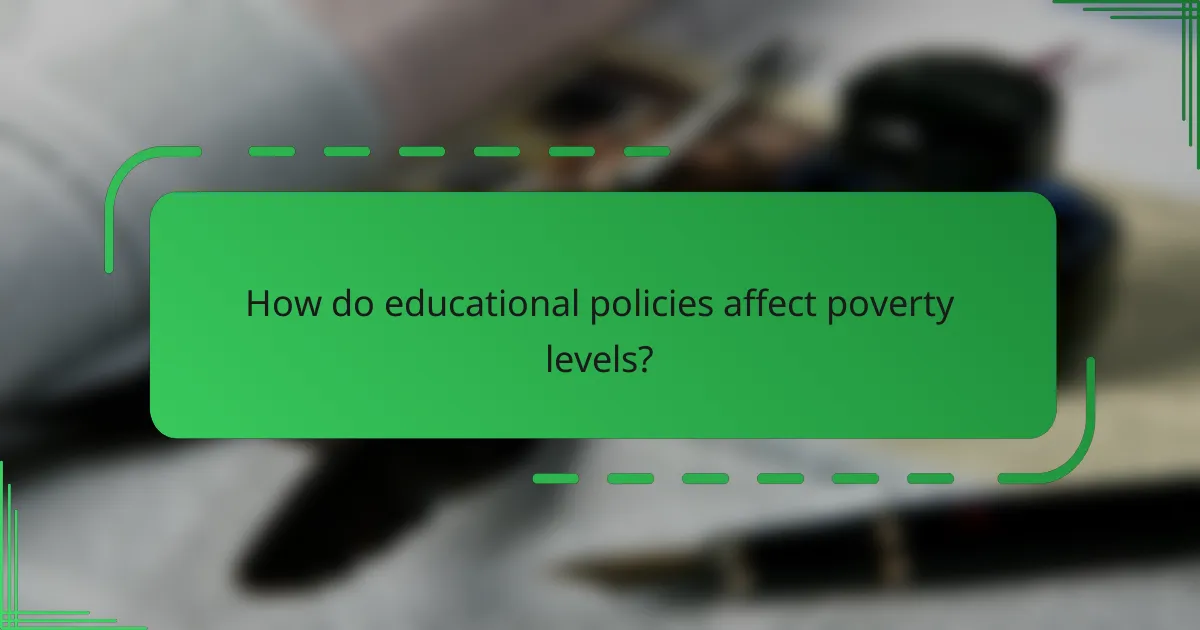
How do educational policies affect poverty levels?
Educational policies play a crucial role in shaping poverty levels by influencing access to quality education and the opportunities available to individuals. Effective policies can enhance educational outcomes, leading to better job prospects and economic mobility, thereby reducing poverty rates.
Impact of No Child Left Behind Act
The No Child Left Behind Act (NCLB) aimed to improve educational standards and accountability in U.S. schools, particularly in low-income areas. By focusing on standardized testing and performance metrics, it sought to ensure that all students, regardless of background, received a quality education.
While NCLB increased funding for disadvantaged schools, it also faced criticism for creating a narrow focus on test scores. This emphasis sometimes led to teaching to the test rather than fostering critical thinking and creativity, which are essential for long-term success and poverty alleviation.
Effects of charter schools on local economies
Charter schools can have a significant impact on local economies by providing alternative educational options and fostering competition among public schools. In many cases, they attract families seeking better educational opportunities, which can lead to increased property values in the surrounding areas.
However, the effects of charter schools are mixed. While they may improve educational outcomes for some students, they can also divert funding from traditional public schools, potentially exacerbating inequalities. Communities must weigh these trade-offs when considering the expansion of charter schools as a strategy for poverty reduction.
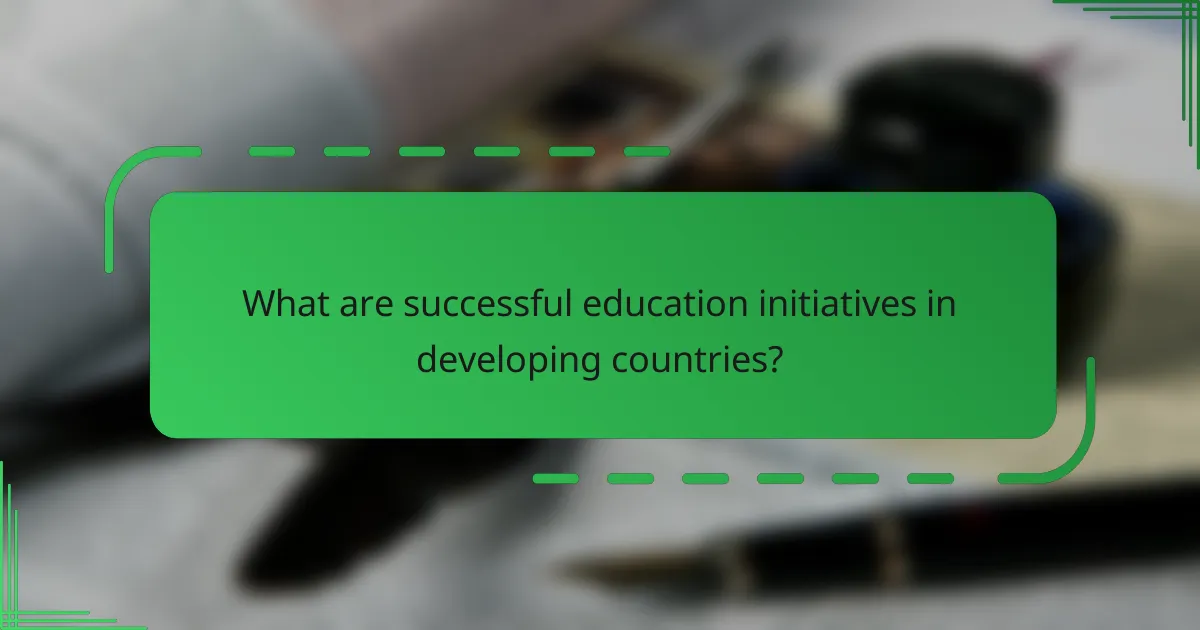
What are successful education initiatives in developing countries?
Successful education initiatives in developing countries often focus on improving access and quality through targeted programs. These initiatives typically address barriers to education, such as financial constraints and community engagement, to enhance learning opportunities for children and adults alike.
Conditional cash transfer programs
Conditional cash transfer (CCT) programs provide financial incentives to families to encourage school attendance and educational achievement. Families receive cash payments contingent on their children meeting specific educational requirements, such as regular school attendance or completing health check-ups.
These programs have shown effectiveness in increasing enrollment rates, particularly among low-income households. For example, in countries like Mexico and Brazil, CCT programs have led to significant improvements in school attendance, especially for girls, by alleviating the financial burden of education.
When implementing CCT programs, it’s crucial to ensure that the conditions are clear and achievable. Monitoring and evaluation are essential to assess the impact and make necessary adjustments to maximize benefits.
Community-based education models
Community-based education models focus on local involvement in the educational process, often adapting curricula to meet the specific needs of the community. These models empower local stakeholders, such as parents and community leaders, to take an active role in managing schools and supporting students.
One successful example is the establishment of community schools in countries like Afghanistan and Uganda, where local resources and knowledge are utilized to create a supportive learning environment. These schools often operate with flexible schedules and culturally relevant teaching methods, which can lead to higher engagement and retention rates.
To effectively implement community-based education, it is vital to foster strong partnerships with local organizations and ensure that the community’s voice is heard in decision-making processes. This approach not only enhances educational outcomes but also strengthens community ties and investment in education.
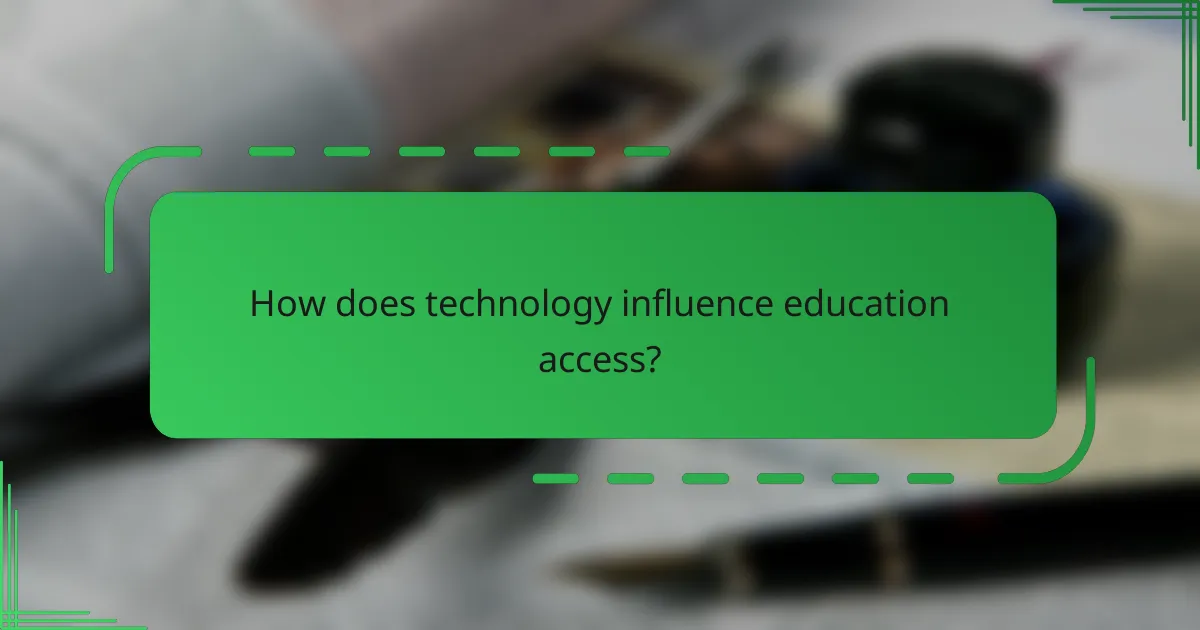
How does technology influence education access?
Technology significantly enhances education access by providing diverse learning opportunities and resources to individuals regardless of their location. It breaks down traditional barriers, enabling learners to engage with educational content anytime and anywhere.
Online learning platforms
Online learning platforms offer a wide range of courses and resources that can be accessed from any internet-enabled device. These platforms, such as Coursera and edX, provide learners with flexibility in scheduling and the ability to learn at their own pace, which is particularly beneficial for those balancing work and study.
When choosing an online learning platform, consider factors like course variety, user reviews, and accreditation. Many platforms also offer free courses, allowing users to explore subjects without financial commitment. However, ensure that the platform’s offerings align with your educational goals.
Mobile education applications
Mobile education applications facilitate learning on-the-go, making education more accessible for users with smartphones or tablets. Apps like Duolingo and Khan Academy provide interactive lessons and quizzes that can fit into short time slots, making it easier for busy individuals to engage with educational content.
When using mobile education apps, look for features such as offline access, gamification elements, and user-friendly interfaces. These aspects can enhance motivation and retention. However, be cautious of apps that require continuous in-app purchases, which can add up over time and may not always provide significant value.
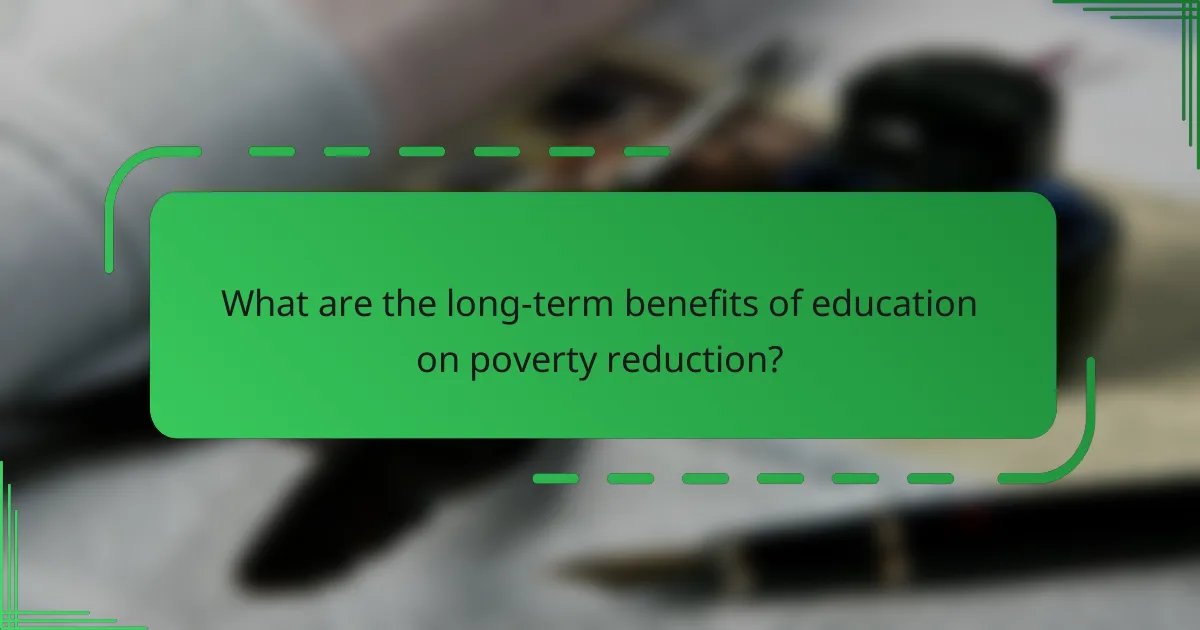
What are the long-term benefits of education on poverty reduction?
Education significantly contributes to poverty reduction by enhancing individuals’ skills, increasing their employability, and fostering economic growth. Over time, educated individuals tend to earn higher incomes, which can uplift entire communities and reduce dependency on social welfare systems.
Improved Economic Opportunities
Education opens doors to better job prospects and higher wages. Individuals with higher education levels often qualify for skilled positions that offer salaries above the poverty line. For example, a college graduate in the United States can earn nearly double the income of a high school graduate, illustrating the economic advantage education provides.
Enhanced Skills and Productivity
Education equips individuals with essential skills that increase their productivity in the workforce. Skilled workers are more efficient and can adapt to changing job markets, which is crucial in today’s economy. For instance, vocational training programs can prepare individuals for in-demand trades, leading to stable employment and financial independence.
Social Mobility and Community Development
Education promotes social mobility, allowing individuals from low-income backgrounds to improve their socio-economic status. As more people gain access to education, communities benefit from reduced crime rates and improved health outcomes. This ripple effect can lead to a more prosperous society overall, as educated individuals contribute positively to their communities.
Long-term Health Benefits
Education is linked to better health outcomes, which can further reduce poverty. Educated individuals tend to make informed health choices, leading to lower healthcare costs and improved quality of life. For example, studies show that individuals with higher education levels are less likely to engage in risky behaviors and more likely to seek preventive care.
Access to Resources and Networks
Education provides access to valuable resources and professional networks that can aid in career advancement. Graduates often benefit from alumni connections and mentorship opportunities, which can lead to job placements and career growth. Building a strong professional network is essential for navigating the job market and finding new opportunities.

